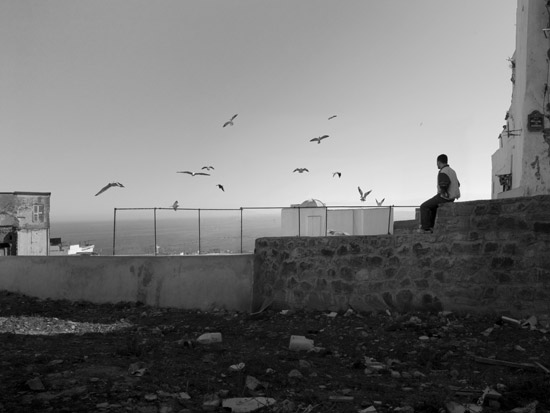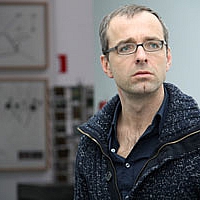
WIELS Avenue Van Volxemlaan 354 1190 Brussels Belgique
In this first major survey of David Claerbout's work in Belgium, the development of the artist's practice is traced across both thematic and chronological lines. Although he originally trained as a painter, the Belgian artist has made a name for himself with video, film, and photographic projections characterized by slowness, precision, and by the unraveling or freezing of time such that time itself is made almost physically palpable. As The Time that Remains, the title of his exhibition suggests, temporality and duration are the central axes along which this exhibition of his work is built. It thus follows the evolution of his practice from wide-screen projections of his now well-known and almost imperceptibly slow videos created with simple animation techniques to films made with complex digital recording technologies, alongside lesser known photographic and online works as well.
The Time that Remains features twelve projections—from his earliest works Cat and Bird in Peace (1996) and Kindergarten Antonio Sant'Elia, 1932 (1998), to more recent videos such as Algiers, Sections of a Happy Moment (2008), Riverside (2009), and Sunrise (2009)—all presented in a specifically conceived display architecture imagined by the artist. And, as of April 6, the exhibition will be augmented by two new works premiering at WIELS: Orchestra, a large-scale photographic light box and The Quiet Shore, a wide- screen projection.
Throughout the artist's oeuvre, the tension between moving and still images has been as central as the struggle of images to grasp the complexity of what Claerbout defines as 'evolving reality.' In the process, the artist persistently unravels not only the language and grammar of the narrative film medium, but also its conventional means of inducing perception and imagination. He thus transforms the principles by which cinema seduces its audience and unmasks those instruments that construct perception, expectations, memory, and recollection—as well as the very experience of time—by pushing the cinematic form to paroxysm.
Claerbout's signature preoccupation with the antagonism between cinematic and photographic time is particularly present in his earliest works, in which he animates symbolic details in what only appear to be still images: the fluttering foliage of trees in Kindergarten Antonio Sant'Elia, 1932 or slowly drifting clouds in Vietnam, 1967, near Duc Pho (Reconstruction after Hiromishi Mine). Later works dwelve more deeply into the narrative character of the filmic medium, analyzing classical and conventional story lines, as in the almost endless repetitions of The Bordeaux Piece or the seemingly interminable conclusion of The Long Goodbye.
More recently, Claerbout has explored the role of sound and music, such as the stereo effect in Riverside or the romantic sonic atmosphere at the end of Sunrise. He also further pursues his concern with scale through wide-screen projections that make the viewer a part of the work. In many pieces, the artist also establishes a spatial relationship between the audience and the depicted characters, as in the two-sided perspective in Rocking Chair, or in the double gaze created by combining inside and outside perspectives in American Car. In these and other pieces, Claerbout represents a micro-moment from different positions, which give the viewer the impression that he or she can look at one given moment, in one given location, from a multitude of perspectives, and in detail. With a sophisticated digital technology, he succeeds in breaking the limits of two-dimensional representation, and in integrating both the notion of 'time' and the multipolarity of narrative perspectives. The fascinating Algiers Sections of a Happy Moment, the elegiac American Room, and his newest piece, The Quiet Shore, are based on this process.
This comprehensive exhibition thus outlines how Claerbout uses cinematic language to evoke and visualize such concepts as the image, space, representation, duration, repetition, and memory. Through it one gains an overview of a remarkable body of work that is as much an ongoing exercise in looking and perception as it is a persistent interogation of time as it operates on that perception.
David Claerbout, born 1969 Kortijk (BE), lives and works in Antwerp and Berlin.

